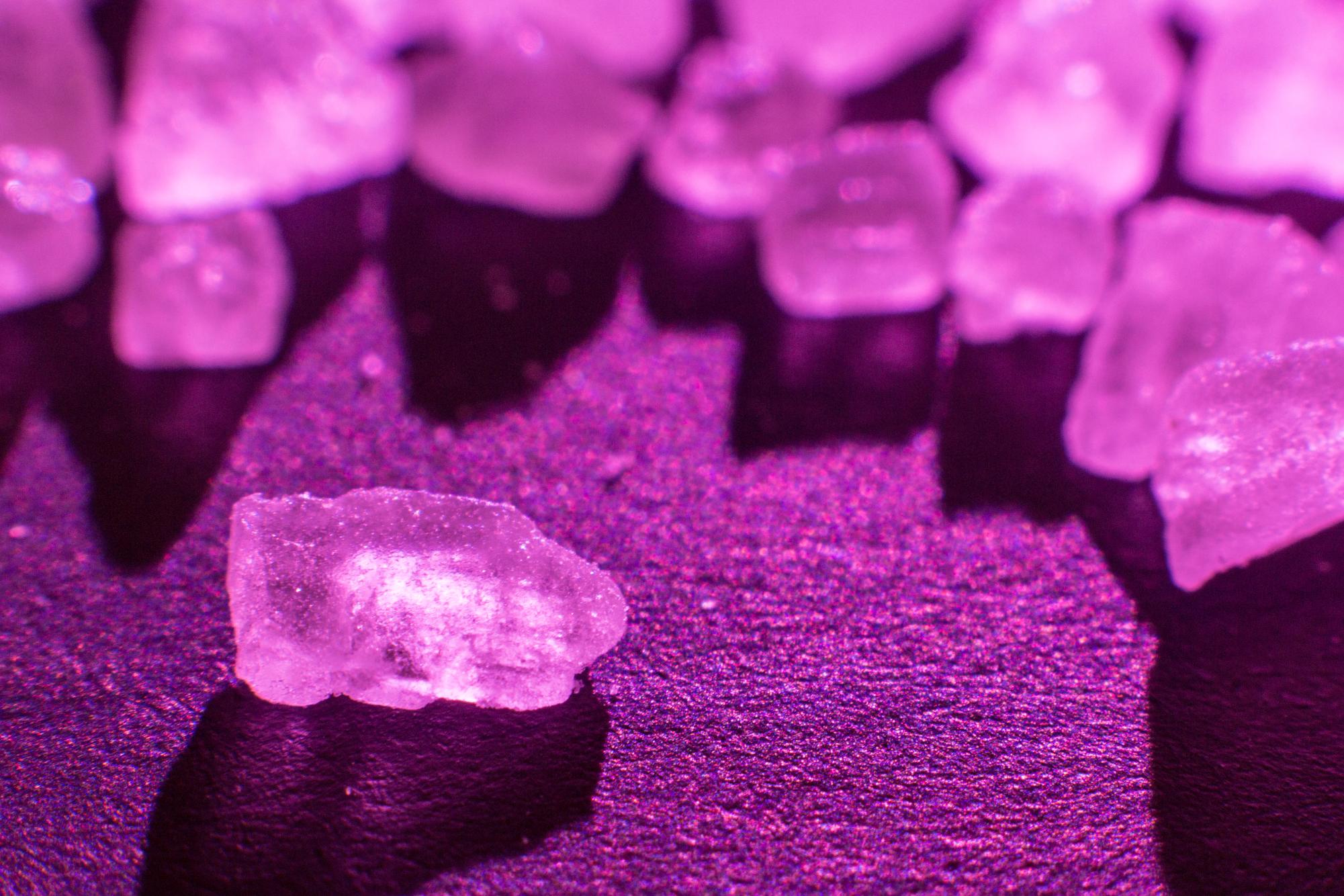Stepping on a bed of rocks could be stepping on a magical part of history.
Typically, rocks are just piles of hard lumps on the ground, broken-up pieces of collected dust, and pressurized minerals. They might even be translucent or have pretty marks on them with pastel colors. Some of them have had some long historical value, and remarked for beauty, seen as a sign of class or an indication of spirituality. Recently, crystals and gems have found their spotlight on bedroom shelves, in the bottom of backpacks, and even braided into hair. That begs the question of why and when a collective decided that specific rocks meant something. A lot of these shiny treasures have gained traction for various claimed properties by communities such as Pagans and a genre of people most would just view as Hippies, although they track back so much farther than witchy parts of 2020.
There might be some crystals in your backyard, or your local creek, specifically something like quartz or some jasper. The first record of a quartz crystal was in 7000 B.C. Mesopotamia. Ancient Egyptians thought it would prevent aging, which led to Egyptians, Greeks, and Romans using it as a talisman of permanence. A branch of quartz, rose quartz, gained it’s reputation as the love stone in markets across Europe in the Middle Ages, but the clearer version gained the idea that it would balance emotions. In other parts of the world, Native Americans and Africans used the clear stone as a tool for spiritual growth and mediation, even believing it to ward off evil or heal people.
Modernly, it’s been used by various religious and non-religious groups as a balanced stone to be charged with any intention, to be stuffed in a jar with lavender and then sealed with wax, or just a pretty rock that looks good on a desk. It’s a translucent stone that branches off from a cluster of other quartz. It can be found in Brazil, Madagascar, Russia, parts of India, and mountainous areas of the U.S. The name Quartz itself is German, branching from quarz meaning hard, and was originally krustallus or crystal in Greek.
Rubies are popular in jewelry, had some highlights in the Bible, and have seen their time on a big screen featured on Judy Garland. When society thinks of ruby red, it’s typically associated with love, passion, and power, much like red roses or red lipstick. The word ruby means red stemming from the Latin word “ruber”. Rubies have a rich history in Asian countries such as Burma, which doubles as one of the oldest ruby deposits. The 600 A.D. Burman soldiers would insert rubies into their skin, which consisted of more or less stabbing themselves with the jewel, believing it would make them invincible in battle. Modernly, rubies have become a representation of the heart chakra, and wisdom. They’re still prominent in jewelry, but not as prominent in spirituality.
While zircon might not be well known, it might be on your aunt’s engagement ring, or deceiving you into thinking it’s a diamond behind a shiny dimly light glass case at your local mall-bound Zales. Even the Greeks used it as a makeshift diamond in the sixth century A.D. Before that, zircon had been referenced in the Tanakh and Bible, where it was one of 12 gemstones to represent the 12 tribes of Israel. In the Middle Ages. It was used as a way to induce sleep, promote wisdom and prosperity, and as a warding stone, where its proclaimed properties have stayed the same since. Zircon for millennia has had large deposits from Sri Lanka, Cambodia, Myanmar, and Vietnam, but can also be found in various spots around the world. The oldest sample was found to be 4.4 billion years old in Australia. The name was derived from “zargun,” which means gold-colored in Persian, that was turned Germanic where it became “zikorn,” and English changed it to include a c.
Crystals have stayed a prominent part of Paganism, Hinduism, Judaism, and even Christianity. They can be used to decorate important religious items or as an important talisman. While not all witches are Pagans, and not every Pagan is a witch, a lot of them are. In some past Pagan spell casting, crystals were placed into a jar based on their assigned properties, like healing, luck, or protection. The crystal depended on what spell, charged with intentions after being cleansed, or removed of previous intentions or energy by moonlight, moon water, salt, other crystals, or some varying form of cleansing that meant something to that witch.
In Hinduism and Buddhism, there’s a list of stones called Navaratna stones. This consists of rubies to represent the sun, emeralds as Mercury, diamonds as Venus, pearls as the Moon, coral as Mars, hessonite as ascending node, which is responsible for solar eclipses, which is when the moon cuts through earth’s orbit, blue sapphire as Saturn, cat’s eye as a descending node, which is typically responsible for any lunar eclipse, and yellow sapphires as Jupiter. They were thought to have a divine purpose, being a representation of gods and the universe, which is where their planetary counterparts came from. The combination of these rocks was thought to bring abundant wealth, happiness, fame, longevity, honor, and mental peace.
In Jewish practices, some stones were used to engrave symbols, words, and names. Similarly to Christianity, some of these crystals represented a different tribe of Israel. There’s a debate as to which stone relates to which person. Each crystal symbolized different spiritual powers for divine properties and connections held close to each specific tribe. Stones were often used in rituals and ceremonies.








